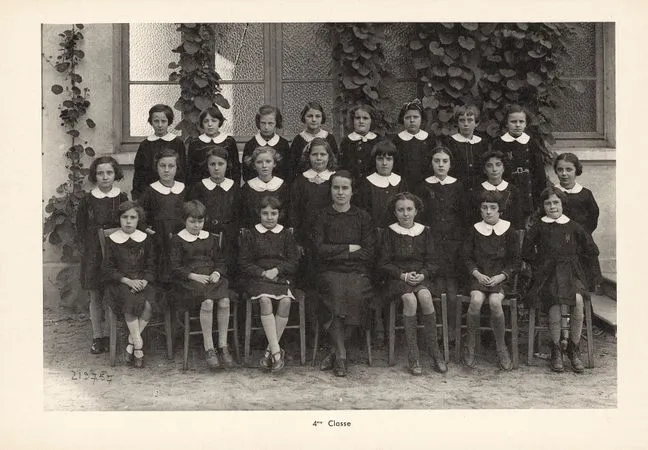The wearing of abayas by high school girls, a subject of concern at the moment. On Tuesday, the Minister of National Education, Pap Ndiaye, asked the rectors for “firmness” in the application of the principles of secularism at school, in the face of the feedback from certain principals concerning the wearing of abayas in their walls. . Regularly, the question of clothing at school thus comes to the fore. Because far from being anecdotal, they reflect changes in society and its upheavals, as shown by the exhibition “Dressing for school” *, which starts this Saturday at the National Museum of Education in Rouen.
Focusing on the period from 1880 to the present day, the exhibition shows that if school clothing has often created debate, it is primarily “because it is not mentioned enough in school regulations. We talk about it in a rather vague way, the internal regulations of the establishments being limited to asking the pupils to wear decent and clean clothes, ”explains Nicolas Coutant, co-curator of the exhibition and deputy director of the museum. A vagueness in which the students have often engulfed themselves and which has generated conflicts with the teaching teams. As we have seen recently with the fashion for tap-socks, which has provoked strong reactions from heads of establishments, some having ended up banning them.
Stronger dress orders for girls
Over the past few decades, girls’ outfits have been the most talked about. “Before the generalization of coeducation at school in the 1960s, trousers were authorized for girls only in the event of extreme cold, and worn under a skirt. It only appeared in schoolyards at the end of the 1960s”, emphasizes Aude Le Guennec, co-curator of the exhibition. In the 2000s, it was the hypersexualized outfits of certain girls that sparked the debate: shorts deemed too short, crop tops…. “The injunctions of sobriety have always weighed more heavily on them. Clothes that are too short or too long are often commented on,” observes Nicolas Coutant. The boys were less scolded about their outfits; only caps, baggy pants and tap shoes are sometimes prohibited in the internal regulations.
More recently, it is the gender dimension of clothing that has been questioned. Especially after the Fouad affair in 2020 in Lille. This transgender teenager had come to school wearing a skirt, which had led to a discussion with the management of the establishment. In 2021, the Ministry of National Education published a circular stressing the need to respect the clothing choices of the pupils concerned, within the limits of the internal regulations: “The clothing and accessories authorized and prohibited are for all pupils without distinction. »
The wearing of outfits with religious significance, a puzzle of the moment
If the dress of the students is so commented on, it is also because it is accused of underlining the social inequalities between students. Hence the recurring debate on the return of the uniform, often proposed by political figures. “It’s all the more astonishing that the school uniform did not exist in public establishments, except for internal high school students. It only survives today in a few overseas territories and in certain private establishments”, stresses Nicolas Coutant. A uniform adorned with fantasies, as Aude Le Guennec points out: “It does not resolve social divisions, because we always distinguish those who bought their uniform at a discount or who have branded accessories. »

But among all the debates on school clothing, it is obviously the one that bears on secularism that has been the most lively in recent years. It was in 1989 that the subject emerged with the ban on access to college for two veiled students, in Creil. The Council of State had finally returned to the establishments the decision to accept or not this type of outfit. In 1994, a circular had prohibited the wearing of ostentatious religious symbols, before the law of March 15, 2004 drove the point home by prohibiting “the wearing of signs or outfits by which students ostensibly show a religious affiliation”. The unions of heads of establishments have repeatedly asked for clear instructions on the list of prohibited outfits, which has so far not been followed up. Hence the current debate on abayas.

